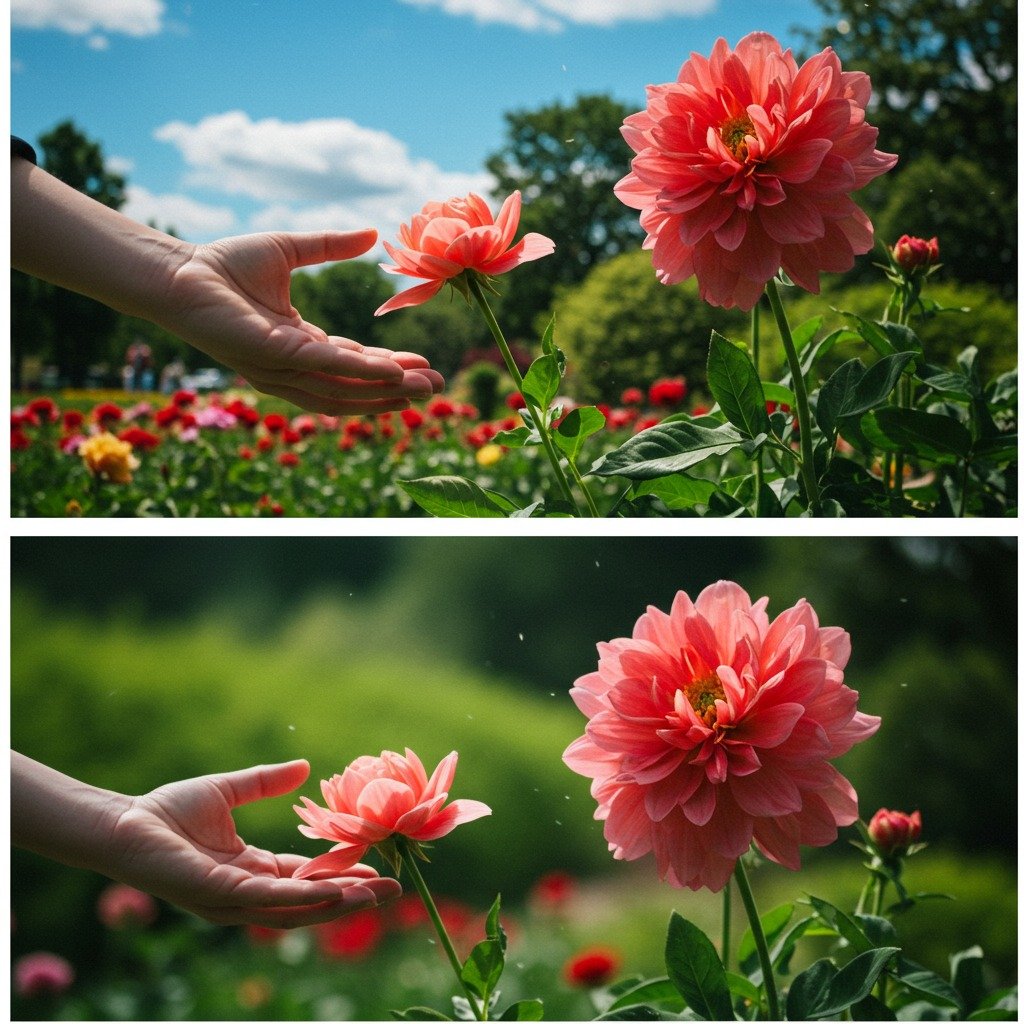Today, we are starting our session with kalanchoe flowers. My kalanchoe plants are growing beautifully and healthily. Today, we will nourish their roots to ensure they continue to thrive. I can see that their roots are strong, and the leaves are firm and developing well. I also have a small seedling here, which has grown significantly. Let me show you my impatiens seedlings. Previously, I pruned them with you and mentioned that I would sell them.
I placed them in water for rooting. Friends, water rooting is an effective method for propagating plants. First, boil the water, let it cool until lukewarm, and then submerge the cuttings. Before placing the cuttings in water, let the freshly cut ends dry in open air for about 30 minutes. This prevents rot and promotes healthy root formation. To accelerate the process, add two to three thin slices of aloe vera leaf to the water. This method enhances root growth in various plants, including woody-stemmed species like geraniums.
Caring for Hoya Plants
Here, I have my hoya plant (wax plant), which has glossy, dark green leaves. It is healthy and growing new shoots. Another shoot is emerging from the stem. If you want your hoya plants to bloom abundantly, they need plenty of sunlight. However, their pot should be kept small. A smaller pot helps the plant focus its energy on flowering. Place it in a sunny spot but protect it from the intense summer heat. Water sparingly to avoid root rot.
The Benefits of Charcoal in Potting Mix
Take a look at my Aglaonema! This beautiful plant is thriving. Aglaonema is an elegant plant that fits well in any home. It has a strong root system and is growing beautifully. To ensure its continued growth, I mix my potting soil with moss, perlite, and charcoal. Charcoal is particularly beneficial for plants because it helps aerate the soil, prevents root rot, and keeps the soil oxygenated. If you don’t have charcoal, you can use leftover wood charcoal from a fire. This method works for all my plants, including orchids and geraniums.
Nourishing Plants with Aspirin Water
Now, let’s move on to our special nutrient mix. Here, I have prepared an aspirin solution. Aspirin is known to protect plant roots from diseases and strengthen them. I recommend using this treatment once a month.
To prepare it:
- Take one aspirin tablet and crush it.
- Dissolve it in one liter of lukewarm, dechlorinated water.
- Stir well to ensure the aspirin is fully dissolved.
- Use this solution to water all types of plants, including cacti, orchids, violets, peace lilies, and geraniums.
I have already prepared the solution. Now, let’s apply it to our plants. First, I will pour two cups into this plant—one from the front and one from the back—to ensure all roots absorb it properly. As we move into spring, this treatment will help reactivate the plants, promoting lush green leaves, strong roots, and abundant flowers. If you have flowering plants, this will encourage more blooms.
Next, I will pour one cup for my hoya plant and another for my Aglaonema. Because the soil of my small seedling is still moist, I will skip this treatment for now. It is important not to overwater seedlings, as excessive moisture can cause root rot. Instead, I will apply this treatment when the soil starts to dry out.
Encouraging Healthy, Vibrant Foliage
Regular application of these treatments helps plants maintain strong, glossy leaves and produce new shoots. If you want your kalanchoe leaves to stay firm, thick, and dark green with plenty of offshoots, follow my care routine:
- Move them outdoors in May.
- If you have a balcony, place them outside to allow for proper air circulation.
- Position them in a shaded area, ensuring they receive either morning or evening sunlight for about 30 minutes.
- Even if they do not receive direct sunlight, they will still thrive.
With this method, kalanchoe plants will develop thick leaves, multiple offshoots, and a compact structure. I will repot these beauties soon. I need to get some fresh soil before planting them in new pots.
Selling Plant Cuttings
Unfortunately, my plant sales will be limited to Kazakhstan. Many people from Turkey have reached out, asking for cuttings, and I genuinely wish I could send them to everyone. If we were closer, I would happily gift them to you. In this holy month of Ramadan, I sincerely mean it—I would not sell them. However, since I am in Kazakhstan, I will be offering the extra seedlings for sale to my local friends and acquaintances.
After all, growing plants requires resources. We buy soil and pots, which cost money. That’s why selling excess seedlings makes sense.
Final Thoughts
So, this concludes today’s session. We regularly apply these nutrient treatments and care for our plants accordingly. Remember to water all your plants with aspirin water once a month to keep them healthy and thriving.
I hope you found today’s tips helpful. Take care, stay healthy, and keep your plants blooming! See you in the next session.
Happy gardening!



